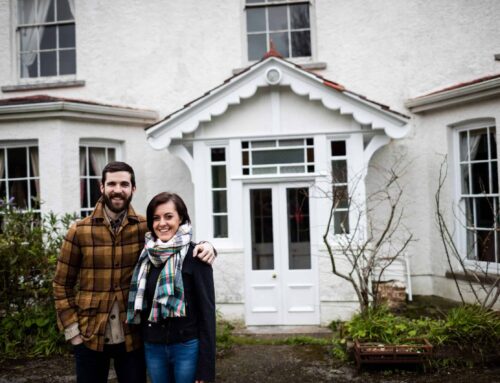How San Francisco’s Tech Industry Impacts the Housing Market in 2025
San Francisco stands tall as a global innovation hub, home to tech giants like Google, Apple, Salesforce, and countless startups. The city’s tech boom fuels not only cutting-edge products but also profound shifts in its housing market. Understanding San Francisco real estate market trends 2025 means recognizing how tech shapes demand, pricing, and neighborhood transformation.
Whether you’re a first-time buyer, seasoned investor, or a seller trying to time the market, grasping these trends can help you make informed decisions. This article explores the deep connection between San Francisco’s tech industry and housing market—from rising salaries and gentrification to remote work effects and luxury smart homes.
High Salaries and Skyrocketing Housing Demand
The tech sector’s high salaries directly boost demand for San Francisco housing. According to recent data, tech workers in the Bay Area earn an average salary close to $150,000 per year, nearly double the city’s median income. With this buying power, tech employees often seek homes or rentals near their offices or convenient transit routes to reduce commute times.
Neighborhoods like SoMa, the Mission District, and areas near the Salesforce Tower have seen significant spikes in property demand and prices. In fact, median home prices in San Francisco climbed to over $1.5 million in early 2025—an increase of roughly 8% compared to the previous year.
This surge pricing squeezes out many non-tech workers. Teachers, healthcare workers, and public servants often cannot keep pace with rising costs, exacerbating the city’s long-standing affordability crisis. The “tech wealth gap” creates tension and highlights the growing divide between high-income earners and the rest of the population.
For buyers, this means competition is fierce, especially in neighborhoods close to tech hubs or transit lines. For investors, the high salaries translate into strong rental demand and attractive yields, especially in luxury properties targeting tech professionals.
Gentrification and Neighborhood Transformation
Tech-driven housing demand triggers gentrification, dramatically reshaping San Francisco neighborhoods. Historically affordable communities like the Mission District and Bayview-Hunters Point now face rapid property value increases.
In the Mission District, property values jumped nearly 40% over the past five years, partly due to the influx of tech workers seeking proximity to downtown and tech campuses. While this growth has sparked neighborhood improvements—new restaurants, shops, and better infrastructure—it also pressures longtime residents with rising rents and potential displacement.
Bayview-Hunters Point, once known for its industrial past and affordability, is rapidly evolving with new tech offices and luxury developments. This shift brings opportunity but also challenges for equity and diversity in the area.
Meanwhile, neighborhoods such as Potrero Hill and Dogpatch have emerged as attractive alternatives. Their location near tech hubs, combined with a slightly quieter vibe and new housing developments, make them highly desirable. Potrero Hill’s scenic views and Dogpatch’s waterfront access add to their appeal.
For buyers and investors looking for growth potential, these neighborhoods offer a promising balance of accessibility, lifestyle, and future appreciation.
How Tech Giants Shape Housing Prices and Development
Tech companies don’t just influence hiring—they affect the housing market through their physical presence. Google’s new campuses, Apple’s offices, and Salesforce’s headquarters concentrate thousands of employees in specific neighborhoods. This clustering drives up local housing demand, especially for high-end homes and rentals.
These firms also engage with city planners and officials to influence zoning laws and development projects. Google’s collaborations in the South of Market area, for instance, include mixed-use developments combining office space with luxury apartments and retail. These efforts help accommodate workforce growth but also contribute to rising housing costs.
Luxury condominiums near tech campuses often feature smart-home technologies and premium amenities tailored to tech executives and professionals. The demand for modern, tech-integrated living spaces continues growing as workers seek homes that reflect their lifestyles.
For real estate investors, focusing on areas surrounding tech campuses can unlock strong rental income and capital appreciation. Understanding these corporate-driven shifts is key to anticipating market changes.
Remote Work and Its Impact on San Francisco’s Housing Market
The COVID-19 pandemic accelerated remote work adoption, dramatically altering housing demand in San Francisco. Many tech companies now offer hybrid or fully remote models, prompting some employees to relocate outside the city in search of more affordable living options.
Data from 2024 shows a 10% decrease in downtown rental demand as workers moved to suburbs like Walnut Creek, Pleasanton, or out-of-state markets such as Austin and Seattle. This trend temporarily eased pressure on city housing but also introduced uncertainty about future demand.
Still, many tech workers prefer to maintain a San Francisco base, especially for in-person collaboration and lifestyle benefits. Hybrid work models—where employees split time between home and office—suggest a more nuanced future. Demand for centrally located housing remains strong, particularly for luxury and amenity-rich properties.
For buyers and investors, understanding these evolving preferences is critical. Suburban markets may gain appeal, but San Francisco’s unique urban lifestyle keeps the city competitive. The office space demand could also reshape as companies reconsider how much commercial real estate they need.
The Surge in Luxury and High-Tech Homes
San Francisco’s tech boom fuels demand for luxury homes equipped with the latest technology and sustainable features. Smart home innovations—like voice-controlled lighting, automated security, and integrated energy management systems—are no longer niche but expected in high-end properties.
Buyers, especially tech executives, seek green buildings with solar panels, energy-efficient appliances, and sustainable materials. Wellness amenities such as rooftop gardens, fitness centers, and advanced air filtration are increasingly popular.
Developers are responding by building new luxury condos that combine elegance with eco-consciousness and cutting-edge automation. These homes appeal not only to residents but also to investors looking to capitalize on a market that prizes innovation and comfort.
This luxury trend shapes the high-end segment of the San Francisco property market, distinguishing it from other cities and creating unique investment opportunities.
Corporate Housing and Short-Term Rentals
Tech companies’ dynamic workforce often requires flexible housing solutions. Corporate housing options serve employees on short assignments or those relocating temporarily. These fully furnished apartments offer convenience but also contribute to fluctuating rental market dynamics.
Short-term rental platforms like Airbnb have grown rapidly, fueled by tech employees’ frequent moves. While this benefits property owners, it tightens supply for long-term renters and pushes rents upward. San Francisco has imposed stricter regulations on short-term rentals to mitigate these effects, but demand remains strong.
Investors eyeing the rental market should consider the balance between corporate housing and traditional long-term rentals, factoring in regulatory risks and seasonal fluctuations.
Housing Development and Infrastructure Challenges
San Francisco faces a significant housing supply challenge intensified by tech-driven demand. Despite government efforts to boost construction of luxury apartments and affordable housing, the inventory remains insufficient.
Zoning laws, community opposition, and construction delays often slow down new developments. Neighborhood groups sometimes resist high-rise projects, fearing congestion or loss of historic character, which complicates citywide housing strategies.
Local officials, developers, and tech firms continue collaborating on initiatives aimed at increasing housing stock sustainably. Projects blending luxury living with affordable units try to bridge economic divides, but the path forward is complex.
For investors and homebuyers, recognizing these challenges can set realistic expectations regarding market availability and pricing trends.
What This Means for Buyers, Sellers, and Investors
The tech industry’s influence on San Francisco’s housing market presents both opportunities and hurdles:
- Buyers face stiff competition and high prices near tech hubs but can find value in emerging neighborhoods like Potrero Hill or Dogpatch.
- Sellers benefit from strong demand, especially if their properties are close to major tech campuses or transit.
- Investors should pay attention to luxury home trends, smart technology integration, and rental market shifts influenced by corporate housing and remote work.
Keeping a pulse on tech company expansions, remote work policies, and local housing initiatives offers an edge in navigating San Francisco’s evolving real estate landscape.
Frequently Asked Questions About San Francisco’s Tech-Driven Housing Market
Q: Will SF home prices drop in 2025?
A: Prices may stabilize or see modest growth. Remote work could soften demand somewhat, but limited housing supply and ongoing tech growth keep prices high.
Q: What neighborhoods are best for buying a home in SF 2025?
A: Look at Potrero Hill, Dogpatch, the Mission District, and SoMa for a mix of growth potential and access to tech hubs.
Q: How does remote work affect the SF housing market?
A: It has caused some migration to suburbs but many tech workers maintain ties to SF, supporting sustained demand for well-located housing.
Q: Are luxury homes a good investment in SF right now?
A: Yes. Tech buyers prioritize smart, green, and amenity-rich properties, driving demand in the luxury segment.
Stay Ahead of San Francisco’s Housing Market in 2025
The tech industry’s rapid growth will continue shaping San Francisco’s housing market in complex ways. Understanding these trends empowers buyers, sellers, and investors to act confidently in an often unpredictable market.
Ready to explore real estate opportunities aligned with tech-driven market trends? Contact us today for expert advice tailored to your goals.




